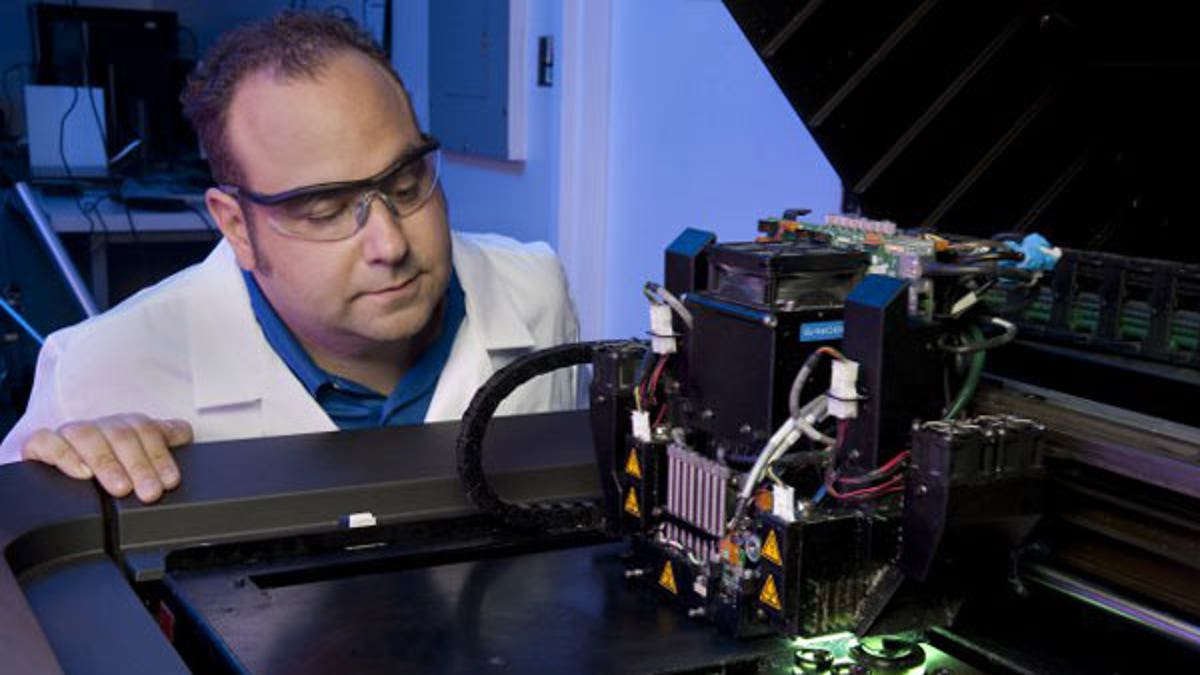
(Military.com)
Norfolk, Va. -- The Navy has taken 3-D printing to sea aboard an amphibious assault ship, the USS Essex, to help sailors learn how to print needed spare parts and acclimate the fleet to the breakthrough technology, service officials said.
"The Navy put a printer aboard the USS Essex to test if they could print parts and train the sailors how to use the machine. Sailors picked up on it pretty quickly," said Jim Lambeth, 3-D printing lead at the Navy's Combat Direction Systems Activity, Dam Neck, Va.
The Navy conducted sea-trials off the coast of San Diego with the 3-D printer aboard the ship, testing how the equipment could function with the ship's motion and examining how it could quickly generate needed parts for the ship.
The printed materials first exist as a computer simulation or drawing before providing the basis for the 3-D print.
Navy leaders are excited about the possibility of 3-D printers being able to generate interim parts or tools until permanent replacements are available. Soldiers in Afghanistan have already taken advantage of 3-D printers building equipment in the field such as bomb sensors.
Officials said 3-D printers could work from scans of body parts in order to produce more ergonomic equipment. The printers could also leverage an existing computer model of a needed part and quickly manufacture permanent parts, Lambeth explained.
"We are in the beginning stages of having this be operational," he said.
Although high-tech 3-D printing machines have been around for years, recent developments have made the technology much more effective and less expensive -- such as the advent of more detailed software and a wider range of materials, Lambeth explained.
"A lot of times there is a part on a ship that breaks. It may take several months to order the new part, so instead we can print a temporary part for them till the final part becomes available. Because we can produce unique shapes that aren't normally possible through traditional manufacturing – we can now produce final parts in those unique shapes that may be more capable than the part that was manufactured using traditional production," he said.
Thus far, 3-D printing has been able to efficiently manufacture wrenches, gaskets, electric boxes, medical instruments, model airplanes and other specialized tools, Lambeth explained.
The Navy's Combat Direction Systems Activity near Norfolk, Va., has been printing prototype parts with 3-D printers to further advance the technology for the service.
"We call it additive manufacturing. Instead of traditional manufacturing or subtractive manufacturing, you are adding material to the part. You can get complicated shapes and you can produce parts without a lot of machinery. One printer can produce a part in whatever shape you want versus having different types of machines to cut different angles and get different pieces," he added.
There are various 3-D printing technologies which use a growing number of materials from thermoplastics to ceramic and other metals. One technique uses a spool or wire fed into nozzle that melts plastic materials to just above the melting point, it then deposits it onto a platform, he explained.
"It cools and it cures and you have a 3-D print part," Lambeth said.
3-D printing can bring substantial cost advantages as well, meaning it could lead to the rapid replacement of key parts without requiring the time and expense of getting parts manufactured and shipped from different vendors, he added.
Vice Adm. Phil Cullom, Deputy Chief of Naval Operations, Fleet Readiness and Logistics, recently said the Navy plans to build upon progress with 3-D printing/
"3-D printing will take time to evolve but it is clearly a 'quantum leap' technology... it is simple, cheap and more convenient to use than other manufacturing methods. Today, we can print prosthetics, tools and basic parts. Tomorrow, we'll be able to print entire aircraft wing, entire jet engines and skin tissue," he explained.
Further down the road, 3-D printing will be able to make entire aircraft, robots, UAVs and ammunition, Cullom added.
"The logistics of the future will be more about delivering the right digital design file to the right printer, in the right location, to produce the right part, tool or system at the right time. This can increase the speed of execution, improve readiness, decrease costs, and avoid shipping parts around the world. Eventually we'll be able to embed sensors, electronics, communication capabilities, and microprocessors in unmanned aerial vehicles printed from 3-D printers," he said.
-- Kris Osborn can be reached at kris.osborn@monster.com

